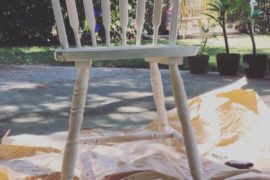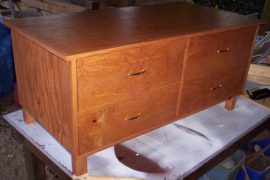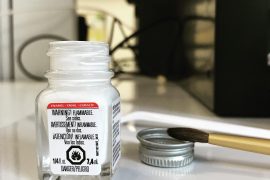Before reading this article, we recommend that you read the introduction. Holes, cracks and voids in the finished surface need to be filled after treatment and prior to touch up. Some filling is best done after the finish is applied, depending upon the individual cases,after which we can move on to cleaning.
Pumice or rottenstone and pigment mixed with thinned spar varnish can be applied to areas were just the grain of the wood needs to be filled. The area is allowed to dry and smoothed with fine sandpaper lubricated with Moses T’s St. John’s Oil.
Holes, cracks and voids are vest filled with a hard burn in stick. Shellac sticks or stopping (made of beeswax and rosin) can be used to fill larger holes. Use a burn in knife and apply enough material to fill the particular voids, cracks, etc., then heat the knife and clean it with a soft cloth. Then gently heat the knife and smooth out each filled spot. A lower temperature must be maintained to avoid scorching surrounding areas. Some burn in sticks will bubble if the temperature is too high or dimples in after they cool. You may need to repeat the process if this occurs. If necessary the filling can then be smoothed with fine sandpaper lubricated with Moses T’s St. John’s Oil or St. John’s Wax. Rottenstone can be used to buff out to a desired shine, it should also be lubricated with oil.
Once you get the knack of using stopping or burn in sticks, you will find it a versatile material for finish repairs. It is completely reversible for curatorial considerations and its workability can produce professional results with a little practice.
By adding powdered pigment to heated stopping, any color can be achieved. Only a small amount of pigment should be used, to allow the translucent nature of stopping to match the natural depth of real wood. With filling and touching up, it is important to imitate the nature of the wood by adding depth to fill or touch up by layering fill and touchup. Wood has natural depth and luster. Finishing increases the depth and luster by optically changing the surface. By copying the depth and luster of the real wood and finish in the fill and touchup, the eye is more easily fooled into not noticing the touch ups and fills.




